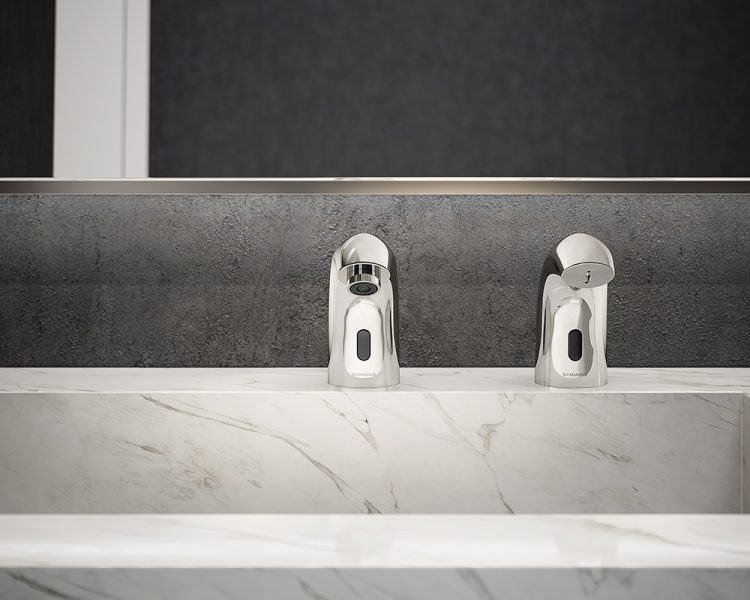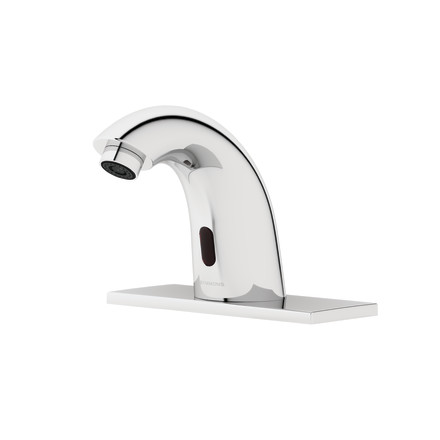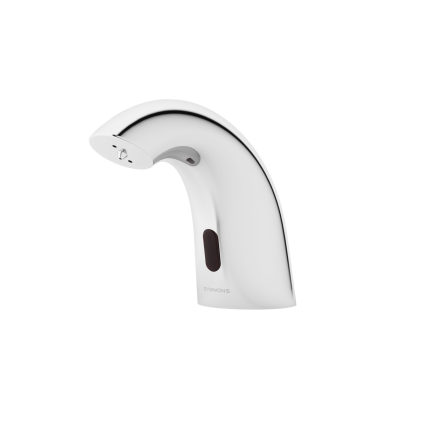Are Sensor Faucets and Dispensers Right for My Commercial Application?
When you think of a faucet or dispenser with a sensor, cleanliness is the first thing that comes to mind. That’s why sensor-activated bathroom fixtures are such a common sight in hospitals and public bathrooms—because traditional faucets and dispensers can be extremely unsanitary. They’re unsanitary in more ways than one, too.
First, you must touch a faucet to turn it on, then the spray from handwashing can further contaminate its surface, and finally, turning it off again is another point of contact that can dirty otherwise freshly washed hands. The same is true for soap dispensers, too. It’s not just sanitation that is a concern. There are other reasons to consider touchless faucets and dispensers in your commercial application. Let’s dive in.
Cost Versus Lifetime Savings
In any building project or retrofit, cost is always a concern. It is true that sensor-activated faucets and dispensers will cost more than traditional styles, and the installation cost will be higher, too, since you’ll need to not only run conventional plumbing, but also electrical to power the sensors.
On the flip side, though, you’ll likely save big over the years simply by reducing wastage. When using bathroom faucets, most people let the water run as they wash their hands, whereas a sensor-activated faucet can be set up to allow water only to run when someone places their hands beneath it. Likewise, sensor soap dispensers will distribute a measured amount of soap, which prevents waste from people pumping out too much.
Ease of Use
Sensors can be more advantageous in some settings than others. Consider an elementary school with dozens of children touching faucets and dispensers throughout the day, which increases the risk of cross-contamination. Also, younger children may have difficulty reaching high enough to operate faucets and dispensers unless they’re placed extremely low. Sensors will keep things cleaner and make fixtures easier to use.
Similarly, touch-free fixtures are helpful for people with disabilities. Injuries, mobility issues and conditions like arthritis can make it difficult to handle faucets and soap dispensers, which means these fixtures can be a lifesaver.
Do It for the Looks
In high-end settings, touchless devices can have a very unexpected advantage: Their sleek aesthetics. No matter how well they’re designed, traditional faucets and dispensers will always have a bit of clunkiness to them by necessity because knobs, handles, and buttons are needed to activate them. Touchless devices have no need for these things, which means a sensor faucet can be as simple as a gracefully arched piece of stainless steel. In executive bathrooms or in high-end spaces featuring modern design elements, you could consider the sleek look of these devices to be the icing on the cake.
So, are sensor faucets and dispensers right for you? In many commercial applications, they are indeed the right choice—especially in these challenging and uncertain times.


